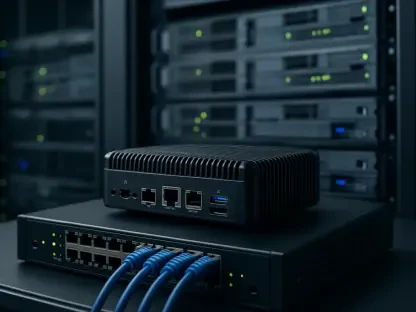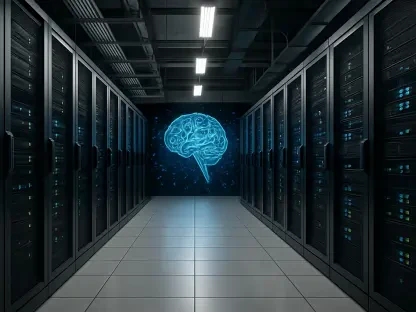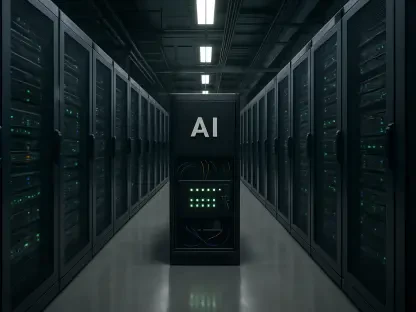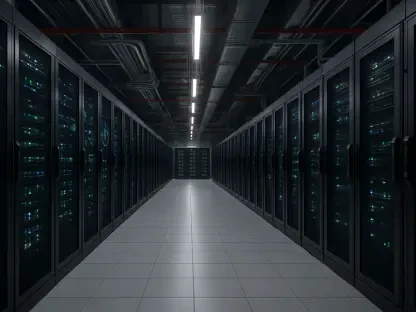The transformative wave of artificial intelligence (AI) is sweeping across industries, economies, and everyday life, heralding what experts term an “AI supercycle”—a remarkable era of rapid growth and widespread integration. From autonomous vehicles navigating busy streets to virtual reality (VR) headsets redefining entertainment, AI is pushing the boundaries of innovation at a breathtaking pace. Yet, beneath this dazzling surface lies a critical, often underappreciated foundation: network infrastructure. Without advanced connectivity capable of handling massive data loads, ultra-low latency, and seamless reliability, the ambitious promises of AI could falter. This article delves into the intricate relationship between AI and telecommunications, highlighting insights from industry pioneers and cutting-edge research at Nokia Bell Labs. The core message is unmistakable—existing network systems are ill-prepared for AI’s demands, and failing to upgrade them could halt this technological revolution in its tracks. As major players like NVIDIA invest billions in partnerships with Nokia for AI-driven solutions, the need to overhaul network capabilities has never been more urgent.
The Hidden Foundation of AI Progress
The role of networks in the AI era often goes unnoticed, yet they serve as the essential backbone for every breakthrough, from real-time data processing to the seamless operation of smart devices. Public attention frequently gravitates toward sophisticated AI algorithms or eye-catching applications, but the harsh truth is that without high-capacity, robust connectivity, these technologies grind to a halt. Consider the frustration of a VR headset lagging during an immersive experience or the danger of a self-driving car losing critical sensor data mid-journey—these disruptions trace back to inadequate network support rather than flaws in AI itself. Nokia’s CEO, Justin Hotard, has pointed out a troubling trend: data centers are increasingly constructed based on power availability rather than proximity to optimal connectivity, creating inefficiencies that hinder performance. This gap underscores a pressing reality—traditional infrastructure is no longer sufficient to meet the escalating needs of AI, making a fundamental redesign of networks not just beneficial, but imperative for sustaining technological momentum.
Moreover, the limitations of current systems are glaring when viewed against the backdrop of AI’s voracious appetite for bandwidth and speed. Legacy networks struggle to deliver the ultra-low latency required for instantaneous decision-making in AI applications, such as autonomous machinery or real-time analytics. The mismatch between what AI demands and what existing infrastructure can provide creates bottlenecks that threaten to derail progress across multiple sectors. Industry leaders argue that only a complete overhaul of network architecture—moving beyond incremental upgrades to visionary, scalable solutions—can bridge this divide. Companies are racing to address these shortcomings, with partnerships forming to tackle the connectivity crisis head-on. The stakes are high, as the ability to process and transmit vast amounts of data without delay is not a luxury but a prerequisite for AI to reach its full potential. Without such advancements, the very innovations that promise to reshape the world risk becoming unfeasible.
Surging Data Demands and Next-Gen Solutions
The AI supercycle is driving an extraordinary explosion in data consumption, placing unprecedented strain on global network systems. According to projections from Nokia Bell Labs Consulting, data usage is expected to grow by 20% annually, fueled by AI applications alongside persistent high-bandwidth activities like video streaming. This surge creates a pressing challenge for infrastructure that was never designed to handle such volumes, exposing vulnerabilities in speed, capacity, and reliability. To counter this, the industry is pivoting toward cutting-edge technologies like 5G-Advanced and early 6G frameworks, exemplified by NVIDIA’s substantial $1 billion investment in Nokia’s AI-Radio Access Networks (AI-RAN). These solutions aim to provide the robust connectivity necessary to support AI’s relentless demands, ensuring that data can flow seamlessly across devices and platforms without interruption or delay.
Beyond raw numbers, networks are increasingly recognized as the “digital nervous system” of modern economies, a perspective championed by NVIDIA’s Jensen Huang. Their importance extends far beyond mere data transmission, touching on critical areas like national security and economic resilience. A failure to adapt infrastructure to AI’s needs could have ripple effects, undermining not just technological innovation but also societal stability. The article underscores that transforming networks is no longer an optional endeavor but a fundamental requirement, backed by significant commercial commitments and widespread industry agreement. The momentum toward next-gen connectivity reflects a shared understanding that without these advancements, AI’s transformative potential remains locked behind outdated systems. Investments and collaborations signal a clear path forward, but the scale of the challenge demands sustained effort to ensure that infrastructure evolves in tandem with AI’s rapid ascent.
Intelligent Networks for an AI-Driven Era
As AI applications multiply, the sheer complexity and speed of their operations render human oversight impractical, necessitating networks that can think and adapt on their own. Autonomous, self-organizing systems are emerging as the solution, capable of managing resources and optimizing performance in real time without constant intervention. Nokia stands at the forefront of this shift, pioneering AI-optimized 5G networks that span optical, IP, and wireless domains. These innovations offer a vision of a future where networks dynamically respond to fluctuating demands, ensuring efficiency even under the heaviest AI workloads. Such intelligence is not merely a convenience but a critical component for scaling AI across industries, from smart manufacturing to urban planning, where split-second decisions rely on uninterrupted connectivity.
This evolution also addresses a broader need for resilience in the face of growing technological complexity. Intelligent networks can predict and mitigate potential failures before they occur, maintaining stability in environments where AI systems operate continuously. Unlike traditional setups that react to issues after the fact, these advanced systems proactively adjust to changing conditions, minimizing downtime and enhancing user trust. Nokia’s developments in this space highlight a shift toward end-to-end solutions that integrate AI not just as a tool for applications but as a core feature of the infrastructure itself. This dual application—AI both driving and being driven by networks—creates a powerful feedback loop that amplifies efficiency. However, achieving this level of autonomy requires overcoming significant technical hurdles, including ensuring compatibility across diverse systems and maintaining security, which remains a paramount concern as networks become more sophisticated.
Securing the Future Against Cyber Threats
With networks becoming indispensable to AI’s operation, they also emerge as prime targets for increasingly sophisticated cyber threats, raising the stakes for industries reliant on uninterrupted connectivity. A breach in such systems could disrupt mission-critical applications, from healthcare diagnostics to autonomous transport, with potentially catastrophic consequences. Nokia is addressing this challenge head-on by developing predictive, AI-powered security models that anticipate and neutralize threats before they strike. Additionally, the company is exploring quantum-safe networks to protect against future risks posed by quantum computing advancements. These proactive measures reflect a recognition that speed and capacity alone are insufficient—trust and reliability must underpin every layer of network infrastructure to safeguard AI’s growth.
The urgency of cybersecurity extends beyond immediate threats to encompass long-term resilience in an AI-dominated landscape. As networks handle ever-larger volumes of sensitive data, the potential for exploitation grows, demanding solutions that evolve alongside emerging risks. Integrating advanced security protocols into the core design of networks, rather than as an afterthought, ensures that vulnerabilities are minimized from the outset. Nokia’s focus on future-proofing through quantum-safe technologies demonstrates a forward-thinking approach, preparing for challenges that may not yet be fully realized but could redefine digital safety. The broader implication is clear: without robust defenses, the very systems enabling AI’s expansion could become its greatest weakness. Protecting this infrastructure is as vital as enhancing its performance, forming a dual priority that shapes the path forward for telecommunications in this transformative era.
Redefining Networks as Interactive Platforms
The vision for networks in the AI age transcends their traditional role as mere conduits of data, positioning them as active participants within the technological ecosystem. Research at Nokia Bell Labs reveals a groundbreaking shift—networks are evolving into sensing platforms that interact with their physical surroundings, unlocking new possibilities for innovation. This capability enables applications like spatially aware robotics, where machines navigate complex environments with precision, and energy-efficient 5G systems that reduce environmental impact. By serving as both connectivity providers and intelligent systems, networks amplify AI’s potential, creating synergies that redefine what telecommunications can achieve in supporting cutting-edge advancements.
This dual functionality also addresses practical challenges in deploying AI at scale, particularly in dynamic, real-world settings. Sensing networks can adapt to contextual changes, such as fluctuating user demands or environmental conditions, ensuring consistent performance where traditional systems might falter. For instance, in smart cities, such networks could optimize traffic flow by interacting directly with autonomous vehicles, reducing congestion and enhancing safety. Nokia’s pioneering efforts in this domain illustrate how infrastructure can evolve beyond passive support to actively enhance AI capabilities. However, realizing this vision requires overcoming significant hurdles, including standardizing technologies across global markets and balancing innovation with sustainability. As networks take on this expanded role, they become not just enablers but co-creators of the AI-driven future, demanding a rethinking of their design and purpose.
Building a Resilient Path Forward
Reflecting on the journey of AI and network evolution, it’s evident that past efforts laid crucial groundwork for addressing the challenges that once seemed insurmountable. The industry grappled with the limitations of outdated systems, recognizing early on that without significant upgrades, the ambitious goals of AI integration would remain out of reach. Collaborative investments, such as those between NVIDIA and Nokia, tackled initial barriers by prioritizing AI-native solutions, while innovations at Nokia Bell Labs provided tangible proof of concept for intelligent, adaptive infrastructure. Cybersecurity measures evolved in tandem, with predictive models and quantum-safe designs countering threats that once loomed large, ensuring that progress wasn’t derailed by vulnerabilities.
Looking ahead, the focus must shift to actionable strategies that sustain this momentum. Industry stakeholders should prioritize scalable, interoperable network solutions to prevent fragmentation, while governments could incentivize research into sustainable 5G and 6G technologies to balance innovation with environmental impact. Strengthening global standards for cybersecurity will be critical to maintain trust as AI applications expand into sensitive sectors. Additionally, fostering cross-sector partnerships can accelerate the deployment of sensing platforms, ensuring that networks actively contribute to AI’s potential rather than merely supporting it. These steps, rooted in lessons from past challenges, offer a blueprint for a future where connectivity no longer limits but propels technological transformation.









